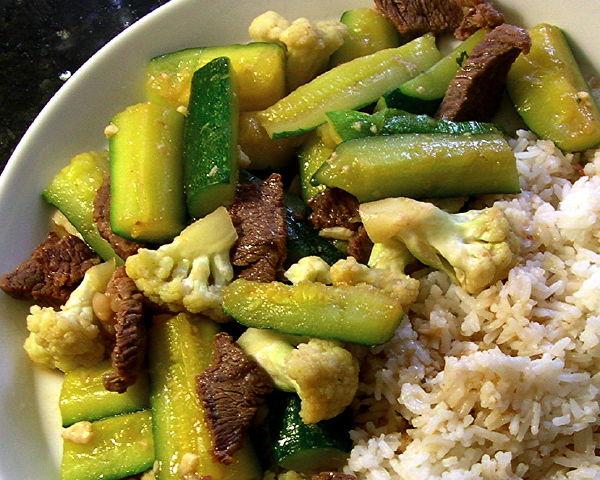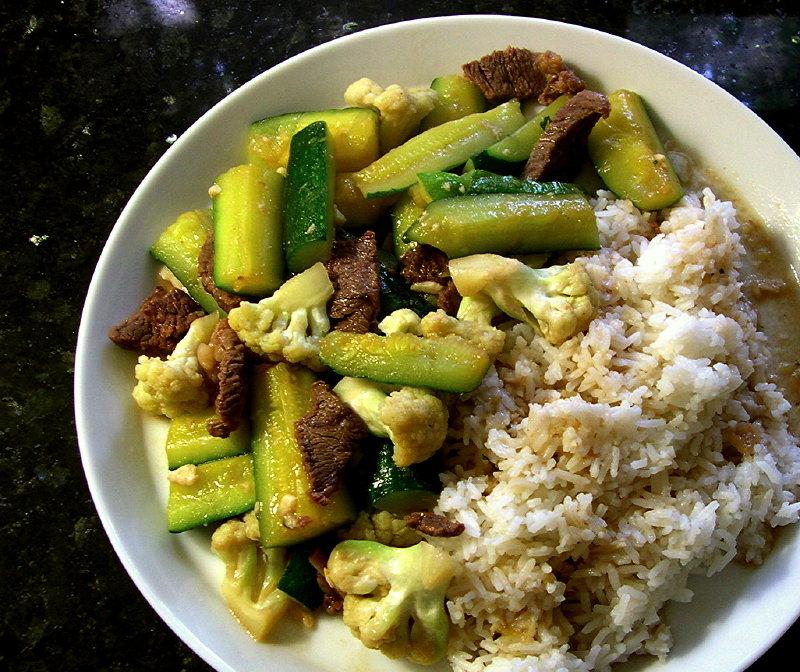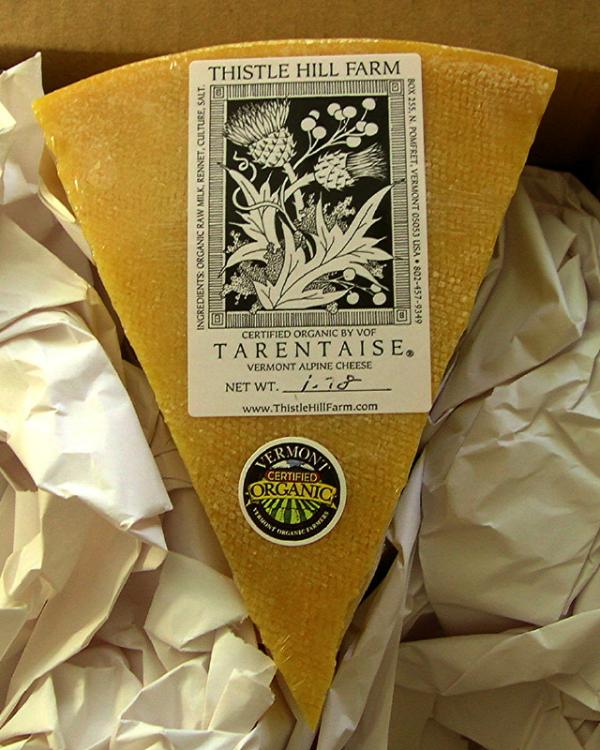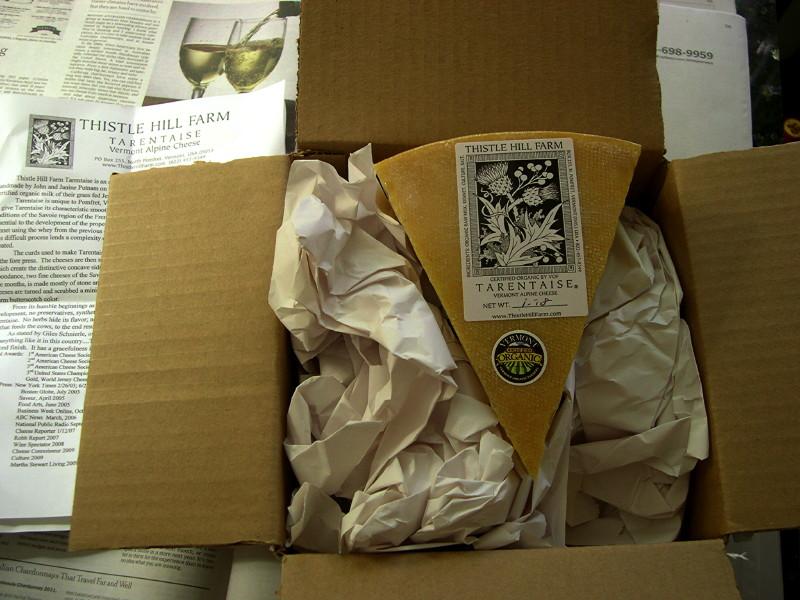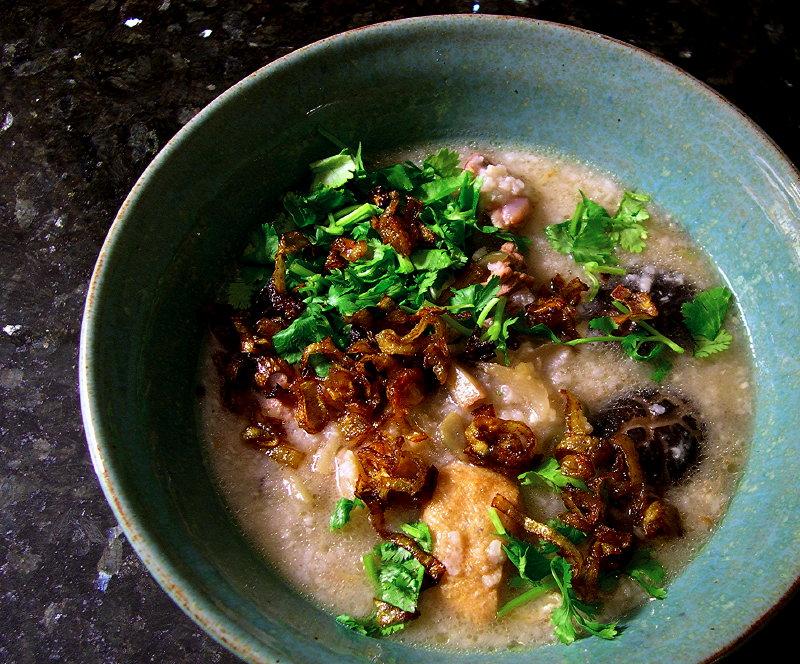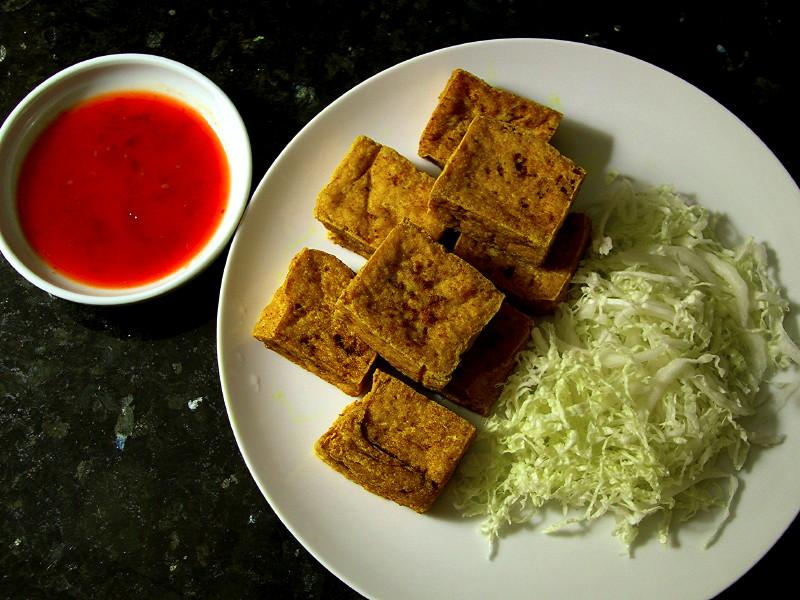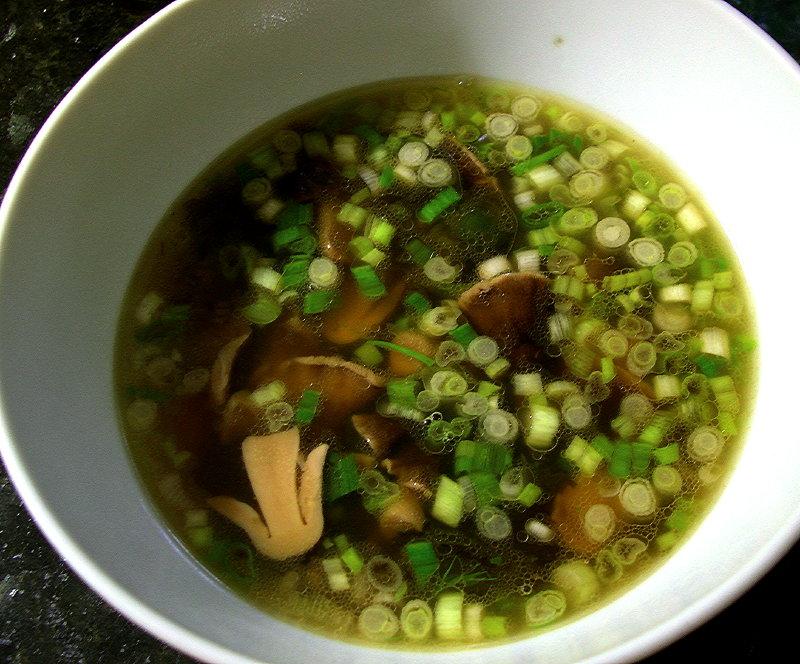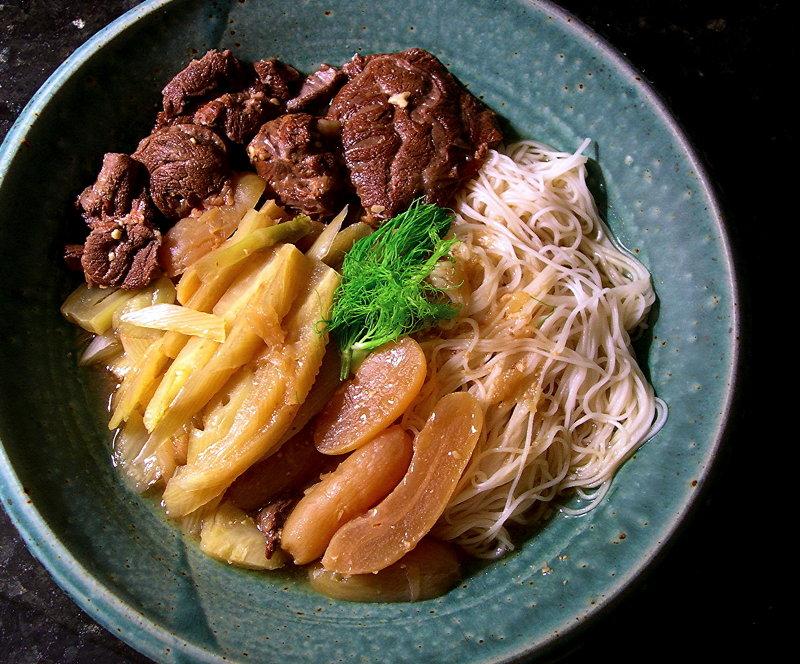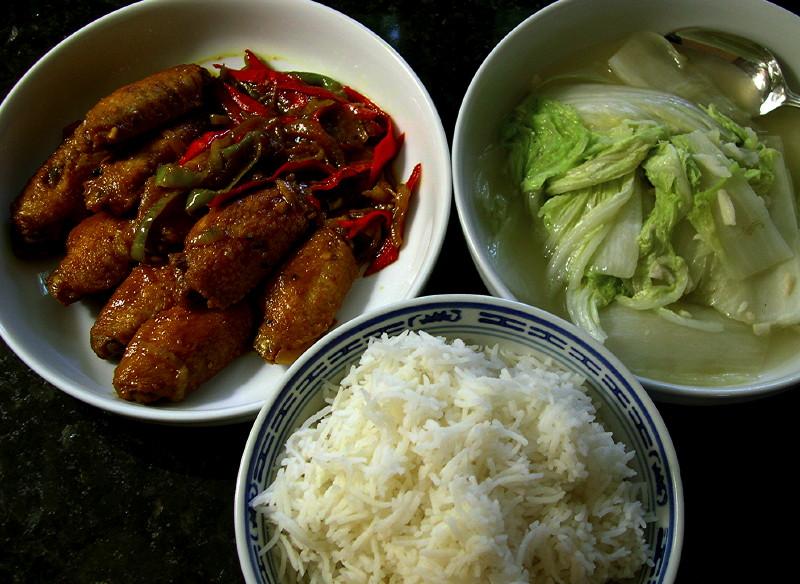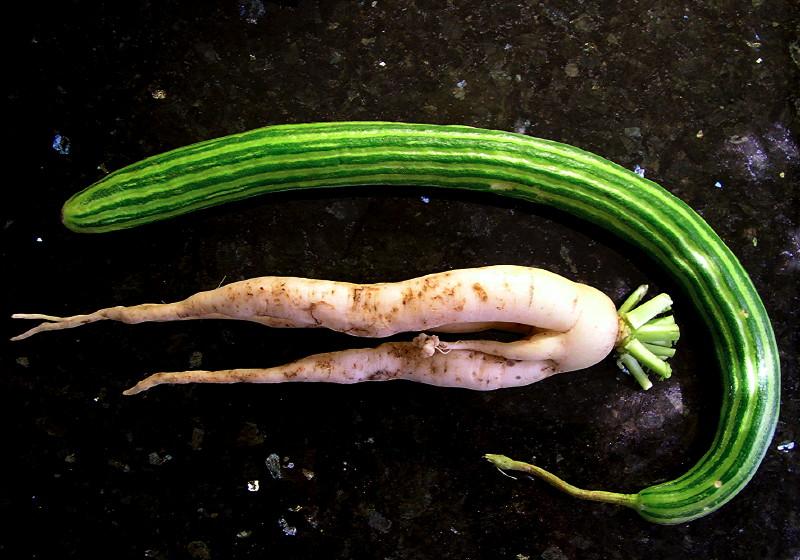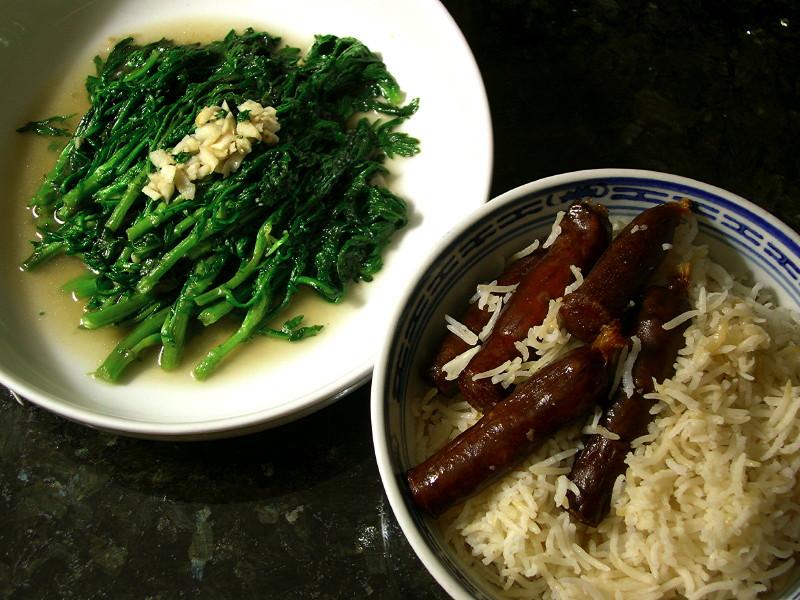-
Posts
3,810 -
Joined
-
Last visited
Content Type
Profiles
Forums
Store
Help Articles
Everything posted by huiray
-
http://sf.eater.com/archives/2014/09/19/frustrated_so_owner_skewers_picky_msghating_customers_via_window_sign.php http://eater.com/archives/2014/09/19/restaurants-epically-passiveaggressive-sign-blames-customers-for-closure.php I'd make an effort to eat there the next time I'm in SF!
-
:-) They ARE mustard greens. But not the type you may be used to, as you mention. These look like "kai choi" (芥菜) (ignore the "skinny types" in this photo set), the kind used to make the kind of Chinese pickled mustard greens called "harm choi/choy" or "syun choy/choi". They are one of the most common vegetables in Chinese cuisine. I've posted before here on eG about stir-frying the "fresh" "kai choy" as you show in your picture, or making soup (many times!!) with "pickled mustard greens" with chicken or duck or pork. Just search the dinner and lunch threads. :-) If you need specific links just ask. ;-) Here's the google translation of the baidu article on 芥菜. They will have a slight bitterness. I like this myself, but some folks who can't stand any hint of bitterness in their vegetables may have a problem with them.
-
Differences between the various versions - some links: http://eatdrinknbmerry.blogspot.com/2008/02/my-love-for-maggi-seasoning-sauce-maggi.html http://www.thekitchn.com/ingredient-spotlight-maggi-sea-91316 http://wanderingchopsticks.blogspot.com/2008/02/maggi-seasoning-sauce.html http://www.vietworldkitchen.com/blog/2011/12/maggi-seasoning-sauce-substitutes-gluten-free-msg-free.html etc etc.
-
-
-
I got this on my doorstep today. :-) I had tired of getting this only sporadically at the local "gourmet" place that carries this. I also gather that there are issues with payments between this local place and Thistle farm. :-)
-
I used a fair bit of BSA and much less frequently OVA - in in both cases one re-dissolved the freeze-dried stuff slowly in buffer (rather than water) with slow stirring, typically with a magnetic bar on a stir plate. All one needs to do to get an immensely foamed "solution" is to have a moment of inattention and "accidently" crank up the stirrer for a few moments. Edited to add links to the intended meanings of the acronyms I used - not to be confused with *other* meanings.
-
Just roam around the arcade and environs around what is called "New Chinatown Square", that arcade I mentioned where that charcuterie shop (Great Wall) is, on the NW side of S Archer diagonally across from Phoenix. (Lao Sze Chuan is also at the southern end) There's a Chinese medicine shop or two you might browse in too. Or stand and watch hand-pulled noodles being made - at Sing's, nowadays**....I used to watch him do his stuff at Hing Kee and slurp up a bowl or two of the stuff there too. (Eh, Hing Kee's shui kow weren't too great the last time I tried them) ** see this article and also this one. You say you have a (whole?) day to spend in Chinatown. How about steamboat for dinner? :-) There are some places for that in C-town, including Mandarin Kitchen & Lao Sze Chuan. You ask about Chinatown in Chicago, but there are other places to get decent Chinese and Chinese-related food and also dim sum in Chicago. I don't know where you will be when you are in town, but consider some of the other places, including the Argyle & N Broadway neighborhood I mentioned earlier. (Perhaps spend the daytime around Chinatown, the evening around Argyle?) There are also those who consider Phoenix not to be the *best* for dim sum, or that other places (e.g. see this list) are just as good or even better. There is also a Westernized/"high-end" type place for dim sum in the Loop (which I have not been to), if one is interested in that sort of experience (that place apparently does their dim sum "in partnership" with Phoenix). I note you are in SE Michigan. Would that be the Detroit-Ann Arbor area or somewhere closer to Lansing? (Curious about your samplings of Chinese places in the DTW area - which I have never sampled - but which I understand contain several excellent places for Chinese food and, presumably, Chinese food supplies)
-
Rice congee. Peanut oil, finely julienned ginger (lots), chopped smashed garlic (generous), short-cut pork spare ribs (cut into single riblets), salt, ja choi (榨菜; a sort of preserved mustard stem), water, simmer, small de-stemmed dried Chinese mushrooms (fa koo type; 花菇); simmer; long grain rice, simmer; cut-up fried tofu puffs, simmer. Eaten w/ freshly deep-fried sliced shallots, sliced scallions, chopped coriander leaves. Redmond salt.
-
Sugo con tonno alla Liparese is given on page 60 of Oretta Zanini De Vita & Maureen Fant's book. (You will need to log in to see that page in "preview" on Amazon, if you don't have the book) Simpler, and whipped up in no time flat. Sicilian dish. :-) Shel's recipe sounds delightful. Still, tuna+(lemon+)capers is not unknown in pasta dishes, BTW.
-
The Epigram "Heritage Cookbook" series, which I consult not infrequently, have exactly ONE bare-bones main illustration/picture in them - a simple basic portrait of the originator of the recipes (mother/father of the author in each case).** No photographs of any dish or any ingredient. The recipes are what I look at. There are, however, footnotes - removed from the recipe proper - notated as "Tips" or "Variations" that contain brief commentary/notations/alternatives/observations & etc, that sort of thing. I like this - it allows the recipe proper to "flow" more naturally. ** They do have additional small "line illustration" type drawings/pictures scattered here and there.
-
...and it's possible these probable "readers" would want lists of the "Ten Best (Insert Category of Meal/Ingredient)" incorporated as well. Oh, and the corresponding "Ten Worst _____" to be avoided at all cost.
-
Simple dinner. • Miso soup. Shiro miso, hot water, wakame, katsuobushi, scallions. It looked like the previous night's soup although it tasted different. • Firm tofu, deep-fried in oil previously used to deep-fry turmeric chicken wings. Lingham's Hot Sauce + Kokita Sambal Bangkok + fresh lime juice. Chiffonaded wong nga pak.
-
I took a look at the index of "La Cucina: The Regional Cooking of Italy" (Accademia Italiana della Cucina) and there are 118 pasta recipes, of which I would say (from a flip through them) roughly 3/4 or thereabouts are pastas either with some sort of sauce or "wet/damp components" of many different types, in many cases with the latter forming part of the whole process of putting the dish together. A great many dishes do not use tomatoes or tomato puree. Just for the heck of it I pulled out the two cookbooks by the Tornabenes (mother-and-daughter) of Gangivecchio in Sicily. There are dozens and dozens of pasta recipes, most built from various ingredients (constituting a "sauce" or "wet component") whether using a very basic sauce as a foundation or not at all. They write of a fig-and-prosciutto pasta, invented by one of the menfolk; or a simple scallion-and-pasta dish, as just two examples that might not occur to folks stuck in a mental frame where marinara sauce or an "alfredo-like" cream sauce are the automatic choices. There are many simple recipes, all different, many also not involving tomatoes. A few recipes with Arabic/Tunisian influence (it is Sicily,** remember) are intriguing. And so on. ** ETA: ...and of course there are those who do not consider Sicily to be Italian at all. :-) ;-)
-
• Soup. Chicken stock, hon-dashi, straw mushrooms, wakame, scallions. • Beef shin braise. Smashed garlic, oil, whole beef shin cut into thick rounds, shiro miso, water, simmer; French Breakfast radishes, fennel bulb, simmer; splash of rice vinegar, bit of palm sugar, simmer. Eaten w/ Fuzhou-type wheat noodles.
-
Yes - a 12-year-old thread...is the OP still around; and has she devolved on to appreciate other sauces than from out of a jar? Well, in terms of pure simplicity Marcella Hazan's simple tomato sauce (as others here and elsewhere know about) wouold still fit the OP's bill. :-) That one has the taste of tomatoes but is not overwhelmingly so. Still, if she does not particularly care for the taste of tomatoes as she avers, then those E/SE Asian sauces might indeed be a nice alternative - assuming the OP has learned to cook by now.
-
I don't see why Chinese/Japanese/SE Asian sauces could not be paired with a suitable pasta. I do it frequently. Think of the pasta as merely another manifestation of "noodle', and vice versa. Note - I DO object to the use of spaghetti or linguini in place of e-mein or the requisite "round noodles" in certain Chinese dishes, because of the wrong texture that the "pasta" substitutes bring to the dish. In many other cases the pairing is *just fine*. :-)
-
Y'know, I've had plates of food before of carefully composed food in a pleasing asymmetrical and patterned layout - which I then proceed to eat in a patterned manner, deconstructing the elements of the plate as I go, scooping up stuff in a way that amuses me and pleases me as I demolish the food in sequential strokes of my fork and knife. Then arranging the remnants, if any, in a pattern with my fork and knife. Modern American food and Japanese food comes to mind in certain places. :-) (Naha in Chicago is one place where I do this with a curl of a smile on my face) (Certain sushi/sashimi plates I get in some places also undergo this treatment, heh) ETA: I've had "omakase sashimi" plates before, as a more detailed example, where the plate arrives with "balanced asymmetry" in its arrangement of the components - I then eat "selectively" and in effect rearrange the remaining items (and even moving pieces around) to reformulate the "arrangement" in a new, ever-changing composition as I eat my way through the plate. :-) :-D Why do I do it? It amuses me. ETA2: I've never been afraid to play with my food, as occasion arises, at least in adulthood.
-
• Chillied chicken wings. • Wong Nga Pak stir-fried w/ garlic. • White rice. The wings were marinated w/ powdered turmeric, salt, vegetable oil, just enough water to be able to coat/toss the wings; then deep-fried & reserved (paper towels). Sliced onions, smashed chopped garlic, sliced deseeded red cayenne and hot long green chillies were sautéed in peanut oil w/ tamarind slurry, palm sugar, salt, fresh lime juice. The wings were added in and tossed to coat and re-warm. (I have a feeling I forgot to list something)
-
Anna N, I'm glad you are hanging on to your taste buds. :-) [ Acclimatization to heat levels is a separate topic altogether. ;-) ]
-
Just wondering - why would you willingly want to burn out your taste buds? I think of "conversations" I've read before of folks who desire/require Szechuanese food in the extreme chillie-hot manner, declaring that other food like Cantonese food is tasteless to them and useless for their purposes. They also aver that "delicate" or "subtle" tastes are useless and unappreciated by them and that they need to be hit on the head with "taste" which they generally describe as very strong, hot, pronounced, etc tastes which they expect from "Chinese" food. Of course, present company is not included in those "discussions" I've read. :-) ETA: Just as I have always wondered about this phenomenon of "Chileheads" in North America, who seek hotter and HOTTER and yet EVEN HOTTER dishes and concoctions to eat - and brag about it. Why??? What manifestation of machismo drives these people to think that eating such things are a badge of honor, over and above the ability of their tastebuds to distinguish between varied things that they willingly obliterate in their pursuit of their chile-eating prowess?
-
Saturday. BRFM: Baby Zephyr squash, celery root w/ celery fronds, leeks, French Breakfast radishes, sweet red peppers, maitake mushrooms, small broccoli florets, small white cauliflowers, poblano peppers, "young" Poona Kheera cucumber, Japanese Trifele tomatoes, daikon, Rose Finn Apple fingerlings. CFM: Painted Serpent cucumber, long red cayenne peppers. Painted Serpent cucumber, 3-pronged daikon w/ appendage hanging between.
-
• Lap cheong ("wine-flavored" and "Cantonese-style") cooked in and with a pot of Basmati rice, dashes of sang chau (a kind of light soy sauce) added towards the end. • Tong Ho (garland chrysanthemum) flash stir-fried w/ garlic, sea salt & vegetable oil.




